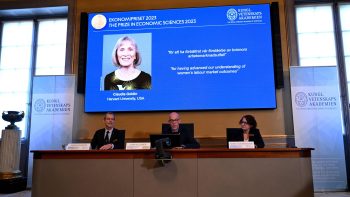Comparisons to 1930s miss big picture
TEXT OF INTERVIEW
Renita Jablonski: Think about all the comparisons we’ve heard about between The Great Depression and what’s happening with the economy right now. A new academic commentary out this week from economists Kevin O’Rourke and Barry Eichengreen says most of those comparisons are flawed because they don’t look at the bigger picture. In other words, looking at the U.S. isn’t enough.
Our economics correspondent Chris Farrell is with us. Chris, why is this particular commentary something we should pay attention to?
Chris Farrell: Well, Barry Eichengreen and Kevin O’Rourke are two serious scholars, and Barry Eichengreen in particular at the University of California Berkeley is the leading scholar of The Great Depression, and the mark of his career has been looking at the period of the 1930’s, The Great Depression, as a global phenomenon. He’s the establishment, he’s sober, he doesn’t shout from the rooftops.
Jablonski: And he’s looking at things like world industrial production, world stock markets, global trade. What’s the key here?
Farrell: There are two keys here: One, it’s a global phenomenon that he’s looking at, just the things that you mentioned. And two, when you look at those things, they’re diving faster now than in 1929 and 1930. Here in the U.S., we’re having a little bit of a dialogue, are we starting to see the Ben Bernanke green shoots, are they starting to show up in the housing market. And what he’s arguing is you cannot just look at the U.S., it’s a little bit misleading. You need to look at the world, and when you go to China, Eastern Europe, Latin America, there’s a lot more weakness. It is a global phenomenon, not a U.S. phenomena.
Jablonski: So, pun intended, this in effect could be pretty depressing when you look at this analysis, but . . .
Farrell: Haha, I was wondering when you were gonna say that, but go ahead.
Jablonski: There is an interesting silver lining to all of this when it comes to the response then and now.
Farrell: Right. The two that they emphasize is monetary policy has been aggressive. Central bankers around the world have cut their rates compared to the 1929, 1930 period. Secondly, governments have been far more aggressive on the fiscal side, the fiscal stimulus. We’re having a big debate here in the U,S. about our fiscal stimulus and was it to big or was it too small, but when you go around the globe, governments are taking action. The third thing I want to emphasize is the recent G-20 meeting, where the IMF is getting increased funding. And one way of looking at the genius of the G-20 meeting is that it said this is a global phenomenon, hey, we’ve got this global institution over here, we’re going to fund it better, and allow it to act quickly to stem a crisis if it emerges in Eastern Europe or in Latin America or somewhere in Asia.
Jablonski: We’ll have a link to that commentary at our Web site, Marketplace.org. Thank you to our economics correspondent, Chris Farrell.
Farrell: Thanks a lot.
There’s a lot happening in the world. Through it all, Marketplace is here for you.
You rely on Marketplace to break down the world’s events and tell you how it affects you in a fact-based, approachable way. We rely on your financial support to keep making that possible.
Your donation today powers the independent journalism that you rely on. For just $5/month, you can help sustain Marketplace so we can keep reporting on the things that matter to you.


















